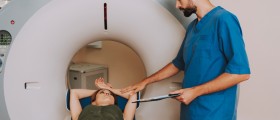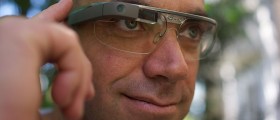
If you have been sent by your doctor todo the MRI of your head, you are probably wondering what sort ofdiagnostic test this might be. Magnetic Resonance Imaging is anon-invasive medical testing procedure, used for diagnosis andpossibly treatment of certain medical conditions.
This device uses magnetic radiation inorder to obtain images of the internal parts of your body. Besidesmagnetic resonance, radio frequency pulses and computer software areused for collecting this information. In order to find out more aboutthis condition, read through the lines below.
Magnetic Resonance of the Head
The popularity of MRI scans in thefield of medicine is due to the clear image it produces,passing through various form of soft and hard tissue. Once the imagesare collected, they are transferred onto a computer, printer or someother device which creates visual data you can use as a hard copy orstore onto many forms of digital media.
Note that MRI scanning does notincorporate x-ray radiation. Therefore, it is one of the mostsuccessful and effective form of head imaging available in humanmedicine.
The main purposes of MRIs of the headare diagnosing any tumors present in the brain tissue or any otheranomalies in the brain area, locating vascular anomalies in the heador some inner ear problems. Strokes can be diagnosed through MRIscanning too, along with traumas and pituitary gland problems.Furthermore, MS and headaches are also diagnosed through this form ofscanning. Moreover, even dementia can be diagnosed through MRI, alongwith certain causes behind recurrent headaches or migraines.
How to Prepare for a Head MRI?
During a head MRI, it is best to wear agown or some other loose-fitting clothing without any metal partslike buttons or fasteners. Thus, make sure you bring such clothing tothe health facility. Depending on the type of MRI exam and the areascanned, your doctor may give you variable instructions on food anddrink consumption prior to the scanning. Either way, unless yourdoctor tells you not to, you can take all the medications you usuallytake and follow all of your regular daily routines before you undergothis form of testing.
Be prepared to possibly be injectedwith a special type of dye, allowing the medical practitioners tofollow your bloodstream through the MRI image. However, theoncologist or radiologist will ask you whether you are allergic tothe contrast material beforehand. Nevertheless, this material isusually completely safe and does not trigger any adverse reactions.
Regardless, do not fail to mention ifyou have experienced any previous problems during some surgeries youhave undergone in the past. Namely, if your kidneys are notcompletely healthy they might to be suitable for being exposed to thedye. Therefore, some tests will need to be carried out before thescanning, assessing your renal health.
MRI scanning cannot harm fetusespresent in pregnant women. However, you are advised to report anypresence of pregnancy since the baby might not respond well to themagnetic resonance. Also, for preventive purposes, it is best not toexpose pregnant women to both the contrast dye and the MRI scanningaltogether.
Speaking of the magnetic resonance, itreacts to metal. Thus, all jewelry should be left outside the MRIroom, along with watches, credit cards, hearing aids, pins, metalzippers, Removable dental work, pens, pocketknives, body piercings,eye glasses etc.
People who have metal implantsinstalled in their body cannot be scanned and should not be exposedto MRI radiation, especially when they have pacemakers, ear implants,clips for brain aneurysms and metal coils in blood vessels installedinside their organisms. Report these to the doctor as soon as he/shementions MRI scanning.
Also, some other potentially dangeroussituations are having an internal defibrillator, drug infusion port,electronic device like a cardiac pacemaker, artificial limbs,implanted nerve stimulator or any other types of metal implants.Additionally, some old types of tattoo dye contain metal and peoplewho have these tattoos may experience problems when undergoing theMRI scanning procedure.
Once all these problems have been ruledout, and you are found completely suitable for MRI scanning, you willbe asked to lie on the movable examination table, strapped up ifnecessary in order not to move excessively during the scanningprocedure. The area of the body undergoing the scanning will havecoils placed on it and, if necessary, the contrast dye may getinjected into the bloodstream.
Then, the movable examination tablewill retract into the MRI device and the scanning will take place.
All in all, this is a very useful andsafe procedure which makes diagnosis of many illnesses possible.While X-ray scanning of the head area is not recommended due to theionizing radiation this procedure emits, MRI scanning is completelysafe and does not lead to any adverse effects.




_f_280x120.jpg)












Your thoughts on this
Loading...